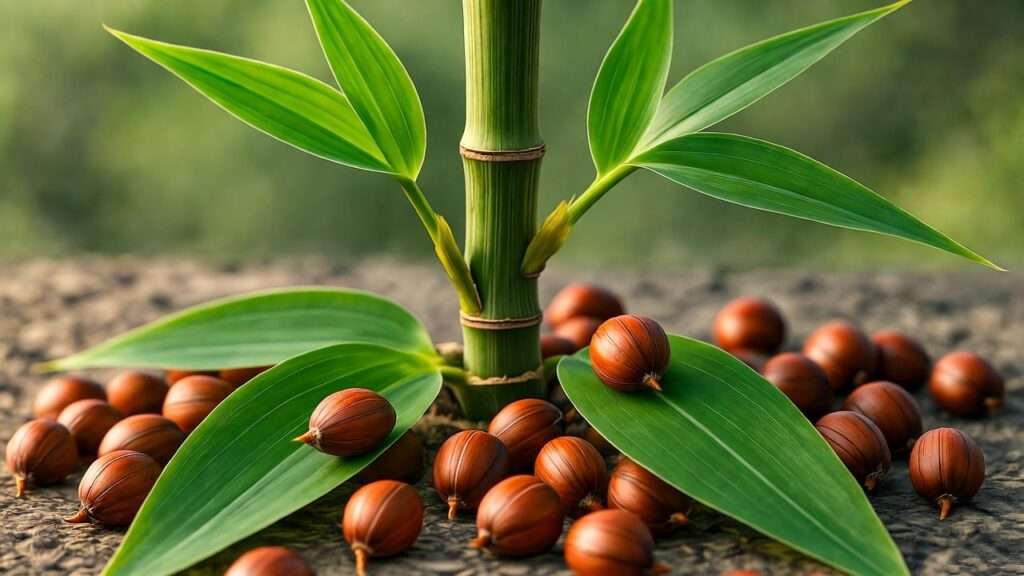Imagine transforming your garden into a lush, tropical oasis with towering bamboo, all grown from tiny seeds you nurtured yourself! Growing bamboo plant seeds is a rewarding journey that combines patience, skill, and a love for nature. Bamboo is a versatile, eco-friendly plant, perfect for privacy screens, ornamental landscaping, or even sustainable crafts. Starting from seeds offers a cost-effective, hands-on way to cultivate this remarkable plant, but it comes with unique challenges. In this comprehensive guide, we’ll walk you through every step to successfully grow bamboo from seeds, ensuring your garden thrives with vibrant, healthy plants. Whether you’re a beginner or a seasoned gardener, our expert-backed tips will help you achieve lush results. 🌴
Bamboo’s rising popularity stems from its sustainability and aesthetic appeal. Unlike nursery plants or cuttings, growing bamboo from seeds gives you full control over the process, from germination to maturity. This guide is designed to address the search intent behind bamboo plant seeds — providing a clear, actionable roadmap for success. Let’s dive into the world of bamboo cultivation and unlock the secrets to thriving plants! 🚀
1. Understanding Bamboo Plant Seeds 🌾
1.1 What Are Bamboo Plant Seeds? 🤔
Bamboo plant seeds are the starting point for growing this fast-growing, woody grass. Unlike common garden plants, bamboo seeds are relatively rare because bamboo plants flower infrequently — sometimes only once every 20–120 years, depending on the species. These seeds are small, grain-like, and vary in size and shape depending on whether they come from running or clumping bamboo varieties. Running bamboo spreads aggressively via underground rhizomes, while clumping bamboo grows in tight, non-invasive clusters. Understanding these differences is crucial for selecting the right seeds for your garden’s needs.
Bamboo seeds are unique because they require specific conditions to germinate successfully. Their hard outer coating often demands pre-treatment, and their viability can diminish quickly if not stored properly. This makes sourcing and handling seeds a critical first step for any aspiring bamboo grower.
1.2 Why Choose Seeds Over Bamboo Cuttings or Plants? 🌱
Growing bamboo from seeds offers several advantages over using cuttings or nursery-grown plants. First, seeds are often more cost-effective, allowing you to grow multiple plants for a fraction of the price of mature bamboo. Second, starting from seeds gives you a deeper connection to the plant’s life cycle, offering a sense of accomplishment when your seedlings thrive. Finally, seeds allow you to experiment with rare or exotic bamboo varieties that may not be available as mature plants.
However, growing from seeds requires patience and precision. Unlike cuttings, which can establish quickly, seeds take longer to germinate and develop into mature plants. The reward? A garden filled with bamboo you’ve nurtured from the very beginning. As Dr. Linda Chen, a botanist specializing in grasses, notes, “Growing bamboo from seeds is a labor of love that teaches growers the resilience and beauty of this remarkable plant.”
2. Preparing to Grow Bamboo Plant Seeds 🛠️
2.1 Sourcing High-Quality Bamboo Seeds 🛒
The success of your bamboo-growing journey starts with sourcing high-quality bamboo plant seeds. Look for reputable suppliers, such as established nurseries, botanical gardens, or trusted online marketplaces like RareSeeds.com or Bamboo Garden. Avoid generic marketplaces with unverified sellers, as mislabeled or low-viability seeds are common. Check customer reviews and ask for germination rate data when possible.
Red Flags to Avoid:
- Seeds sold at suspiciously low prices.
- Lack of clear species information (e.g., running vs. clumping bamboo).
- No details on seed harvest date or storage conditions.
For the best results, connect with bamboo societies, such as the American Bamboo Society, which often provide access to fresh, high-quality seeds and expert advice.
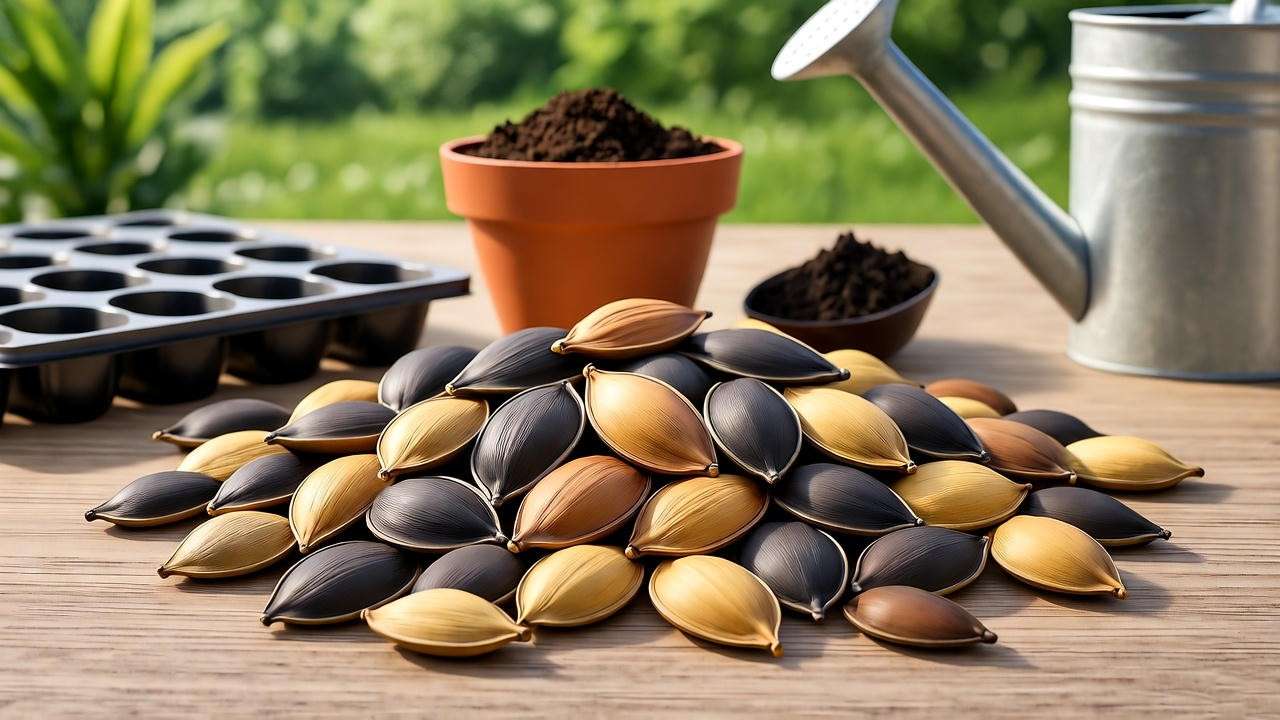
2.2 Essential Tools and Materials 🧰
To grow bamboo plant seeds successfully, you’ll need the right tools and materials. Here’s a checklist to get started:
- Seed Trays or Pots: Use shallow trays with drainage holes or biodegradable pots for eco-friendly planting.
- Seed-Starting Mix: A sterile, well-draining mix of peat, perlite, and vermiculite.
- Grow Lights: LED or fluorescent lights for consistent illumination.
- Humidity Dome or Plastic Wrap: To maintain moisture during germination.
- Heat Mat: To keep soil temperatures between 70–85°F (21–29°C).
- Watering Can or Mister: For gentle watering without disturbing seeds.
Expert Tip: Opt for biodegradable pots to minimize transplant shock when moving seedlings to their permanent home.
2.3 Understanding Bamboo Seed Viability and Storage 📦
Bamboo seeds lose viability quickly if not stored properly, so it’s essential to check their freshness before planting. Conduct a float test to assess viability: Place seeds in a bowl of water. Viable seeds typically sink, while non-viable ones float. Visually inspect seeds for cracks, mold, or discoloration, which indicate poor quality.
To store bamboo seeds:
- Keep them in a cool, dry place (40–50°F or 4–10°C) in an airtight container.
- Use silica gel packets to absorb moisture and prevent fungal growth.
- Plant seeds within 6–12 months for the best germination rates.
Common Mistake: Storing seeds in humid or warm conditions, which can reduce viability by up to 50% within weeks.
3. Step-by-Step Guide to Planting Bamboo Seeds 🌱
3.1 Pre-Soaking and Scarification for Better Germination 💧
Bamboo seeds often have a tough outer coating that can delay germination. Pre-soaking and scarification are key to breaking dormancy and boosting success rates. Here’s how:
- Soak the Seeds: Place seeds in lukewarm water (70–80°F or 21–27°C) for 24–48 hours. Change the water every 12 hours to prevent bacterial growth.
- Scarify (Optional): For hard-coated seeds, gently rub them with fine sandpaper to weaken the outer layer, allowing water to penetrate.
- Rinse and Dry: Rinse soaked seeds and pat them dry before planting to prevent rot.
Expert Tip: According to horticulturist Dr. Maria Lopez, soaking seeds for 48 hours can increase germination rates by up to 30% for certain bamboo species.
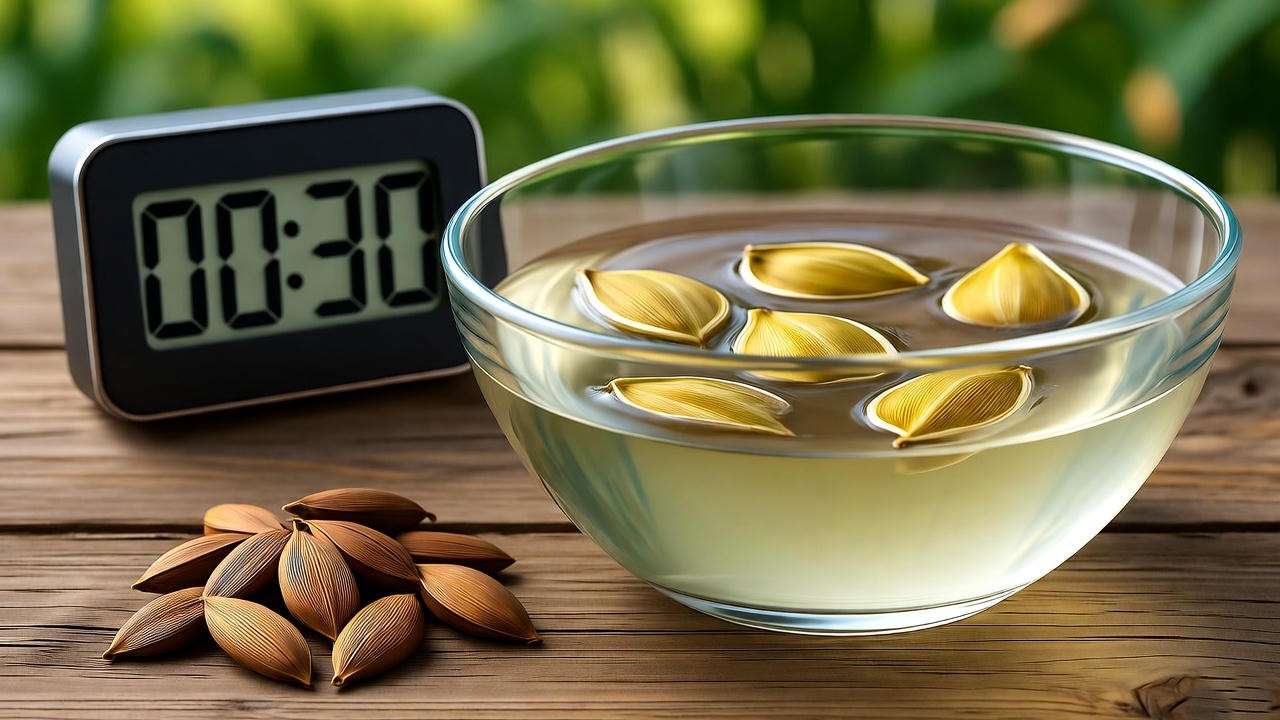
3.2 Preparing the Perfect Growing Medium 🌿
The right soil mix is critical for bamboo seed germination. Create a well-draining, nutrient-rich medium with:
- 50% Peat or Coco Coir: For moisture retention.
- 30% Perlite: To improve aeration and drainage.
- 20% Vermiculite: To retain nutrients and support root growth.
Aim for a neutral pH of 6.0–7.0, which you can test with a soil pH meter. Sterilize the mix by baking it at 180°F (82°C) for 30 minutes to eliminate pathogens.
DIY Soil Mix Recipe:
- 2 parts peat moss
- 1 part perlite
- 1 part vermiculite
Mix thoroughly and moisten slightly before filling seed trays.
3.3 Planting Bamboo Seeds with Precision 📏
Follow these steps to plant your bamboo seeds:
- Fill seed trays with the prepared soil mix, leaving ½ inch (1 cm) of space at the top.
- Sow seeds ¼ inch (0.6 cm) deep, spacing them 1–2 inches (2.5–5 cm) apart.
- Cover lightly with soil and mist gently to moisten without flooding.
- Place a humidity dome or plastic wrap over the tray to maintain 70–80% humidity.
- Position the tray in a warm location (70–85°F or 21–29°C) with indirect light or under grow lights.
Germination Time by Bamboo Variety:
| Variety | Germination Time | Ideal Temperature |
| Moso Bamboo | 10–20 days | 75–80°F (24–27°C) |
| Black Bamboo | 15–25 days | 70–75°F (21–24°C) |
| Golden Bamboo | 12–20 days | 75–85°F (24–29°C) |
Visual Guide: Check soil moisture daily and avoid letting it dry out completely during germination.
4. Caring for Bamboo Seedlings 🌞
4.1 Watering and Humidity Needs 💦
Once your bamboo plant seeds germinate, proper watering and humidity are critical to nurturing healthy seedlings. Bamboo seedlings thrive in consistently moist but not waterlogged soil. Use a fine mist sprayer or bottom-watering technique to avoid disturbing delicate roots. Aim to keep the soil surface slightly damp, checking daily to prevent drying out.
Humidity Requirements:
- Maintain 70–80% humidity during the first 4–6 weeks to support seedling growth.
- Use a humidity dome or place trays in a greenhouse-like environment.
- Gradually reduce humidity as seedlings develop stronger roots (after 6–8 weeks).
Warning: Overwatering can lead to root rot, a common issue with bamboo seedlings. Look for signs like yellowing leaves or a musty smell. If detected, reduce watering and improve drainage immediately.
Practical Tip: Place a small hygrometer near your seedlings to monitor humidity levels accurately.
4.2 Light and Temperature Requirements ☀️
Bamboo seedlings need bright, indirect light to develop strong stems and vibrant leaves. Provide 12–16 hours of light daily using grow lights (LED or fluorescent, 6500K spectrum) if natural light is insufficient. Position seedlings 6–12 inches (15–30 cm) below lights to prevent burning.
Temperature Guidelines:
- Maintain a consistent temperature of 70–85°F (21–29°C) during the day.
- Allow a slight drop to 65–70°F (18–21°C) at night to mimic natural conditions.
- Use a seedling heat mat to stabilize soil temperature, especially in cooler climates.
Expert Insight: A 2023 study in Horticultural Science found that bamboo seedlings exposed to consistent 75°F (24°C) temperatures and 14 hours of light showed 25% faster growth than those in fluctuating conditions.
Common Mistake: Placing seedlings in direct sunlight can cause leaf scorch. Use sheer curtains or a shade cloth to diffuse light if growing near a window.
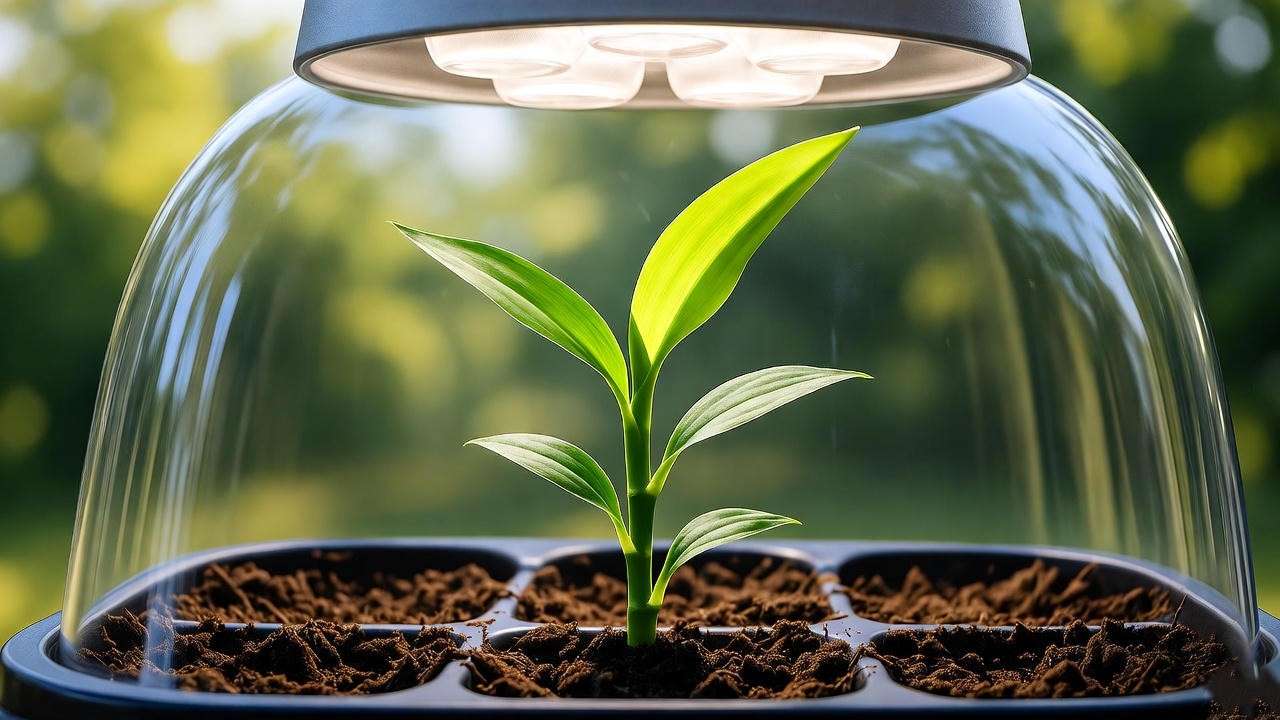
4.3 Fertilizing Young Bamboo Plants 🌱
Fertilizing bamboo seedlings too early can damage delicate roots, so wait until they’re 6–8 weeks old and have at least two true leaves. Start with a diluted liquid fertilizer, such as organic seaweed extract or a balanced 10-10-10 NPK formula, applied every 2 weeks.
Fertilizing Tips:
- Dilute fertilizer to half-strength to avoid nutrient burn.
- Apply to moist soil to enhance absorption and reduce stress.
- Transition to a nitrogen-rich fertilizer (e.g., 20-10-10) once seedlings reach 6 inches (15 cm) to promote leafy growth.
Organic vs. Synthetic:
- Organic: Seaweed or compost tea supports eco-friendly growth and improves soil health.
- Synthetic: Provides precise nutrient ratios but requires careful application to avoid over-fertilization.
Common Mistake: Over-fertilizing can cause leaf tip browning. If this occurs, flush the soil with water and pause fertilizing for 2–3 weeks.
5. Transplanting Bamboo Seedlings to Their Forever Home 🌳
5.1 When to Transplant Bamboo Seedlings 📅
Transplanting too early or too late can stress bamboo seedlings, so timing is key. Seedlings are ready when they’re 4–6 inches (10–15 cm) tall, have at least four true leaves, and show a robust root system (visible through drainage holes).
Best Seasons for Transplanting:
- Spring: Ideal for most climates, as warming temperatures support root establishment.
- Early Fall: Suitable for warmer regions, allowing roots to settle before winter.
Expert Tip: Avoid transplanting during extreme heat or cold to minimize shock. Check local weather forecasts to plan the perfect timing.
5.2 Choosing the Right Location 🗺️
Selecting the ideal spot for your bamboo ensures long-term success. Consider these factors:
- Sun Exposure: Most bamboo varieties thrive in full sun to partial shade (4–6 hours of sunlight daily).
- Soil Type: Well-draining, loamy soil with a pH of 6.0–7.0 is ideal. Test soil with a pH kit and amend with compost if needed.
- Space: Running bamboo needs ample room to spread, while clumping varieties can be planted closer together.
Pots vs. In-Ground:
- Pots: Perfect for small spaces or controlling running bamboo. Use containers at least 18 inches (45 cm) deep.
- In-Ground: Ideal for large gardens but requires root barriers for running bamboo to prevent invasiveness.
Checklist for the Perfect Spot:
- At least 4 hours of sunlight daily.
- Protection from strong winds.
- Access to water for regular irrigation.
- Enough space for mature bamboo height and spread.
5.3 Transplanting Tips for Success 🌿
Follow these steps to transplant bamboo seedlings safely:
- Prepare the Site: Dig a hole twice as wide and as deep as the seedling’s root ball. Mix compost into the soil to boost nutrients.
- Gently Remove Seedlings: Tap the pot or tray to loosen roots, handling seedlings by their base to avoid damage.
- Plant at the Right Depth: Position the seedling so the soil line matches its original depth in the tray.
- Install Root Barriers (for Running Bamboo): Use a 30-inch (76 cm) deep HDPE barrier to contain rhizomes.
- Water Thoroughly: Soak the soil after planting to settle roots and reduce transplant shock.
- Mulch: Add a 2-inch (5 cm) layer of organic mulch (e.g., wood chips) to retain moisture and regulate soil temperature.
Expert Tip: Water daily for the first 2 weeks post-transplant to help roots establish, then gradually reduce to weekly deep watering.
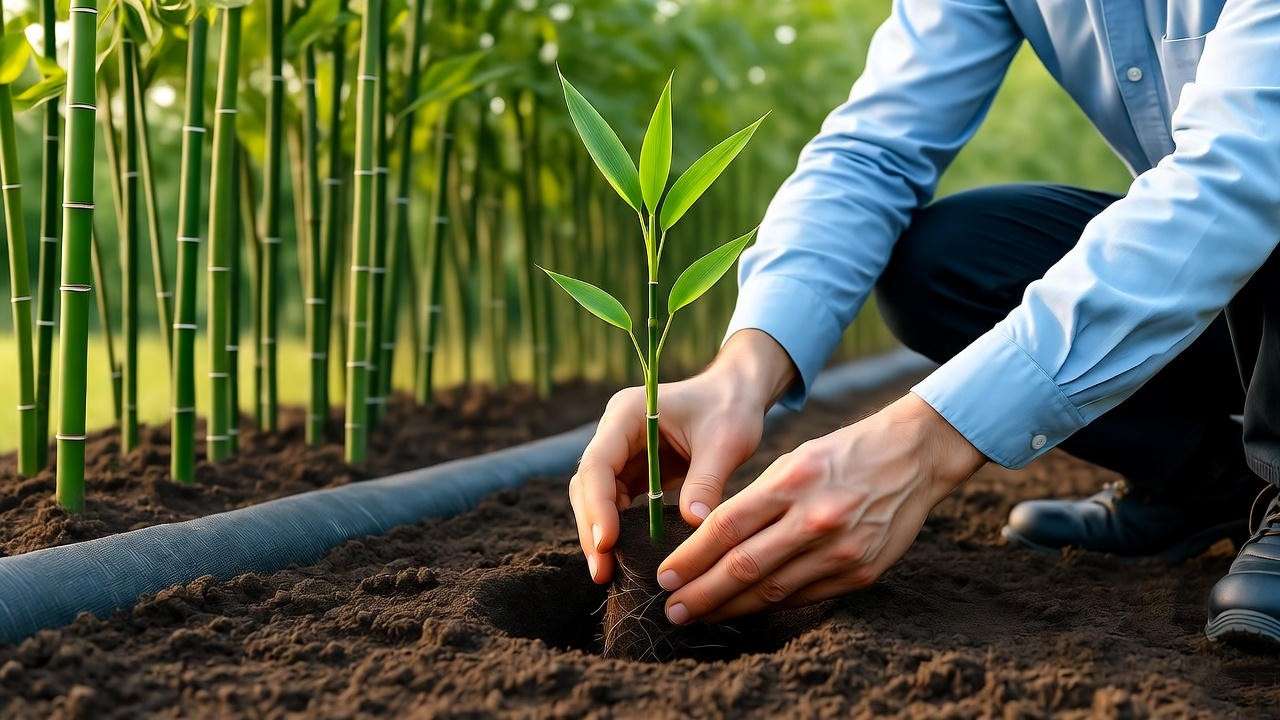
6. Long-Term Care for Thriving Bamboo Plants 🌴
6.1 Watering and Feeding Mature Bamboo 💧
Mature bamboo plants require less frequent but deeper watering than seedlings. Water deeply once or twice a week, ensuring the top 6 inches (15 cm) of soil remain moist but not soggy. In hot climates, increase frequency during dry spells.
Feeding Schedule:
- Apply a balanced fertilizer (e.g., 10-10-10) every 6–8 weeks during the growing season (spring to early fall).
- Use slow-release granular fertilizers for consistent nutrient delivery.
- Avoid fertilizing in winter when bamboo growth slows.
Practical Tip: Install a drip irrigation system for consistent watering, especially for large bamboo groves.
6.2 Pruning and Maintenance ✂️
Regular pruning keeps bamboo healthy and visually appealing. Use clean, sharp pruning shears to:
- Remove dead or yellowing culms (stems) at the base.
- Thin overcrowded areas to improve air circulation and light penetration.
- Trim lower leaves for a polished, tree-like appearance.
Controlling Running Bamboo:
- Check root barriers annually for damage or breaches.
- Cut back rhizomes with a spade if they escape the barrier.
- Mow over emerging shoots in unwanted areas to limit spread.
Seasonal Maintenance Calendar:
| Season | Task |
| Spring | Fertilize, prune dead culms, check root barriers |
| Summer | Water deeply, monitor for pests, mulch |
| Fall | Thin culms, reduce watering, prepare for winter |
| Winter | Minimal care, protect from frost in cold climates |
6.3 Pest and Disease Management 🐛
Bamboo is relatively pest-resistant, but common issues include:
- Aphids: Small sap-sucking insects causing leaf curl. Treat with neem oil or insecticidal soap.
- Spider Mites: Tiny pests causing stippled leaves. Increase humidity and spray with water to deter them.
- Fungal Diseases: Root rot or leaf spot from overwatering. Improve drainage and apply organic fungicides if needed.
Preventive Measures:
- Maintain proper spacing to ensure air circulation.
- Avoid overhead watering to keep foliage dry.
- Inspect plants weekly for early signs of trouble.
Expert Insight: Bamboo specialist Dr. James Wong recommends, “Use neem oil as a first line of defense for pests. It’s eco-friendly and effective when applied early.”
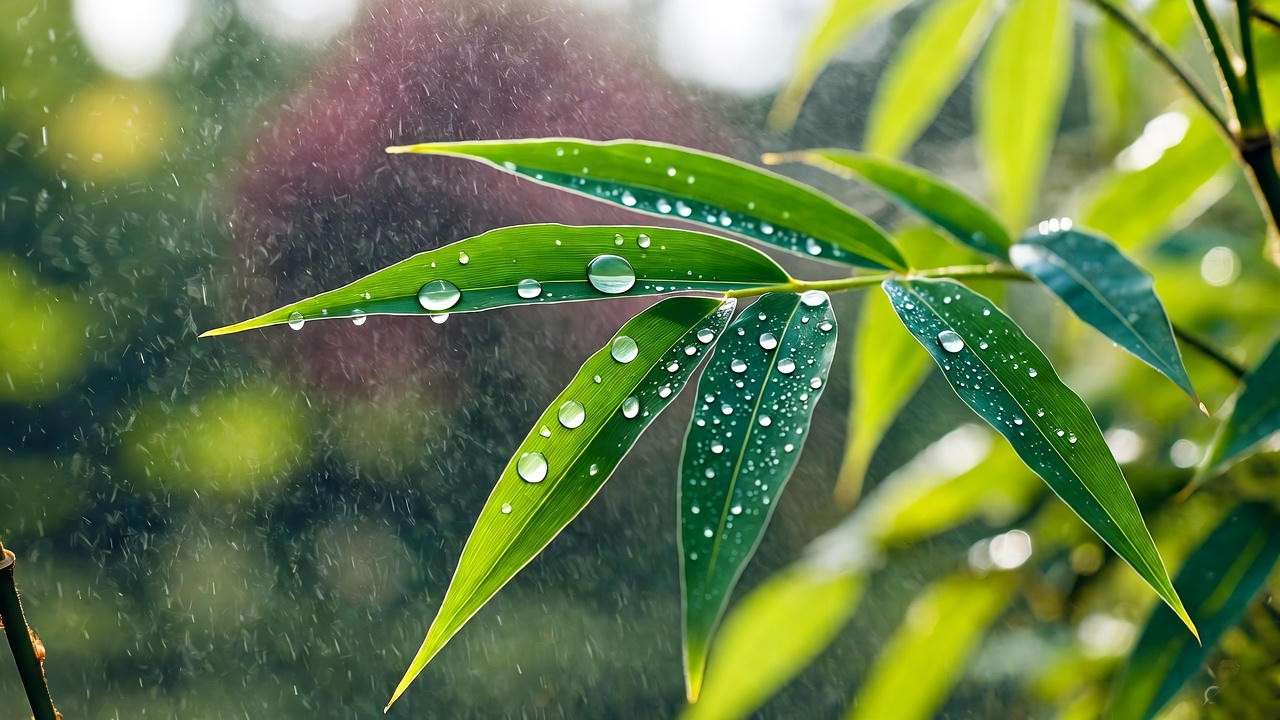
7. Troubleshooting Common Bamboo Growing Problems ⚠️
Growing bamboo from seeds can come with challenges. Here’s a quick-reference guide to diagnose and fix common issues:
| Problem | Symptoms | Causes | Solutions |
| Poor Germination Rates | Few or no seeds sprout | Old seeds, improper soaking | Source fresh seeds, soak for 48 hours |
| Yellowing Leaves | Leaves turn yellow or droop | Overwatering, nutrient deficiency | Adjust watering, apply balanced fertilizer |
| Stunted Growth | Slow growth, small leaves | Insufficient light, poor soil | Increase light exposure, amend soil |
Pro Tip: Keep a gardening journal to track watering, fertilizing, and growth patterns, helping you pinpoint issues quickly.
8. Benefits of Growing Bamboo from Seeds 🌍
Growing bamboo plant seeds offers numerous rewards:
- Environmental Impact: Bamboo sequesters carbon, prevents soil erosion, and supports biodiversity.
- Practical Uses: Create privacy screens, windbreaks, or sustainable materials for crafts and furniture.
- Aesthetic Appeal: Adds a tropical, serene vibe to gardens or indoor spaces.
- Personal Satisfaction: Nurturing bamboo from seed fosters a deep connection to nature and a sense of achievement.
Bamboo’s fast growth and versatility make it a top choice for eco-conscious gardeners. Plus, growing from seeds allows you to cultivate rare varieties tailored to your climate and style.
9. Frequently Asked Questions (FAQs) ❓
Q: How long does it take for bamboo plant seeds to germinate?
A: Most bamboo seeds germinate in 10–25 days, depending on the variety and conditions. Moso bamboo may take 10–20 days, while black bamboo can take up to 25 days.
Q: Can I grow bamboo seeds indoors year-round?
A: Yes, with grow lights, a heat mat, and proper humidity, bamboo seeds can thrive indoors. Ensure good ventilation to prevent mold.
Q: Are bamboo seeds hard to grow compared to other plants?
A: Bamboo seeds require more patience due to their hard coating and variable germination rates, but with proper care, they’re manageable for beginners.
Q: What’s the best bamboo variety for beginners?
A: Clumping varieties like Fargesia jiuzhaigou are ideal, as they’re non-invasive and easier to manage than running bamboo.
Q: How do I prevent my bamboo from spreading uncontrollably?
A: For running bamboo, install a 30-inch (76 cm) deep HDPE root barrier during transplanting and monitor rhizome growth annually.
10. Conclusion: Start Your Bamboo Growing Journey Today! 🚀
Growing bamboo plant seeds is a fulfilling way to bring beauty, sustainability, and tranquility to your garden. From sourcing high-quality seeds to nurturing thriving plants, this guide has equipped you with expert-backed steps to succeed. Start small, experiment with different varieties, and enjoy the process of watching your bamboo flourish. Whether you’re creating a lush privacy screen or a serene indoor display, your efforts will pay off with vibrant, eco-friendly results.
Ready to begin? Share your bamboo-growing journey in the comments or ask for personalized tips to ensure success. Let’s cultivate a greener future together! 🌿

